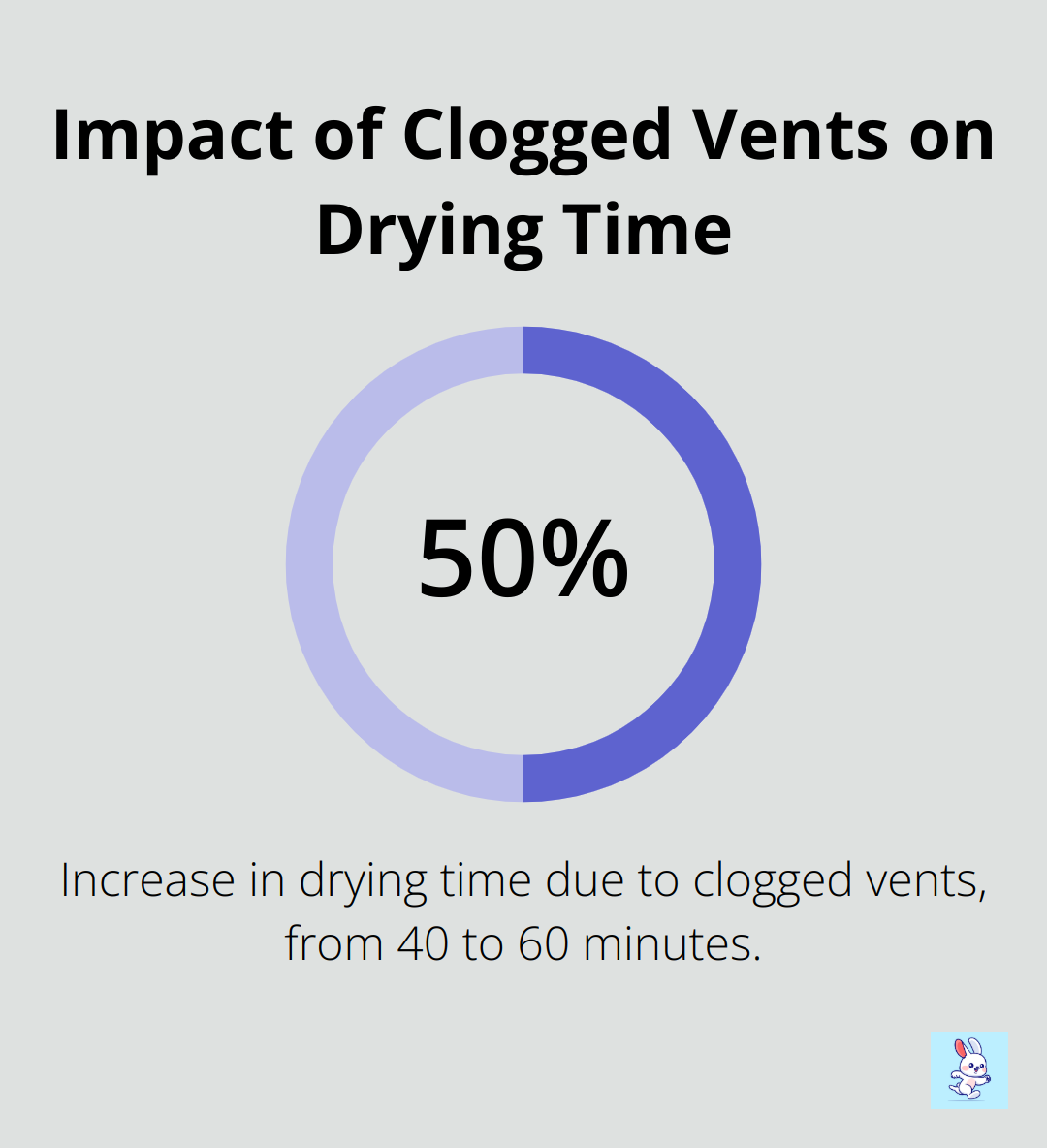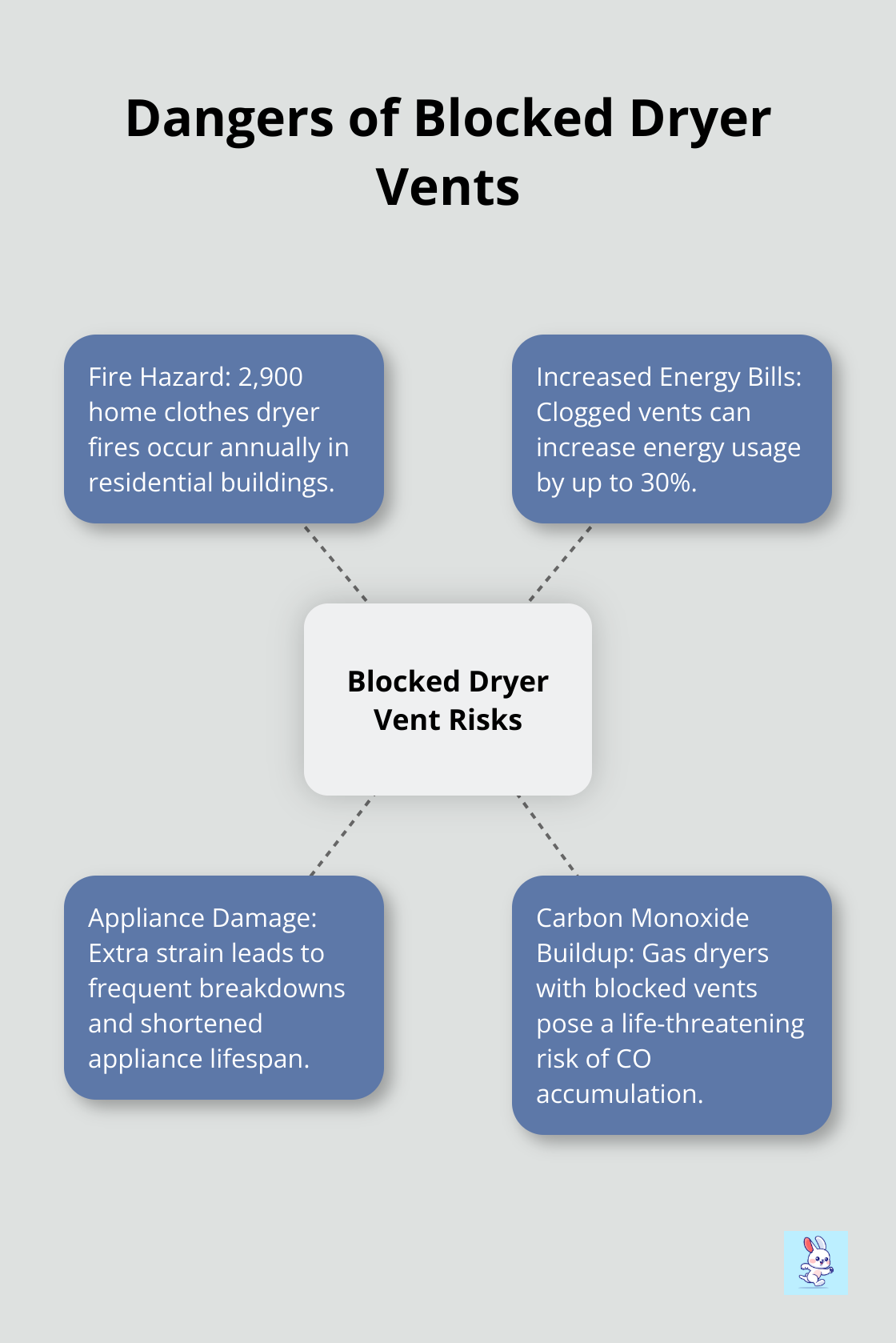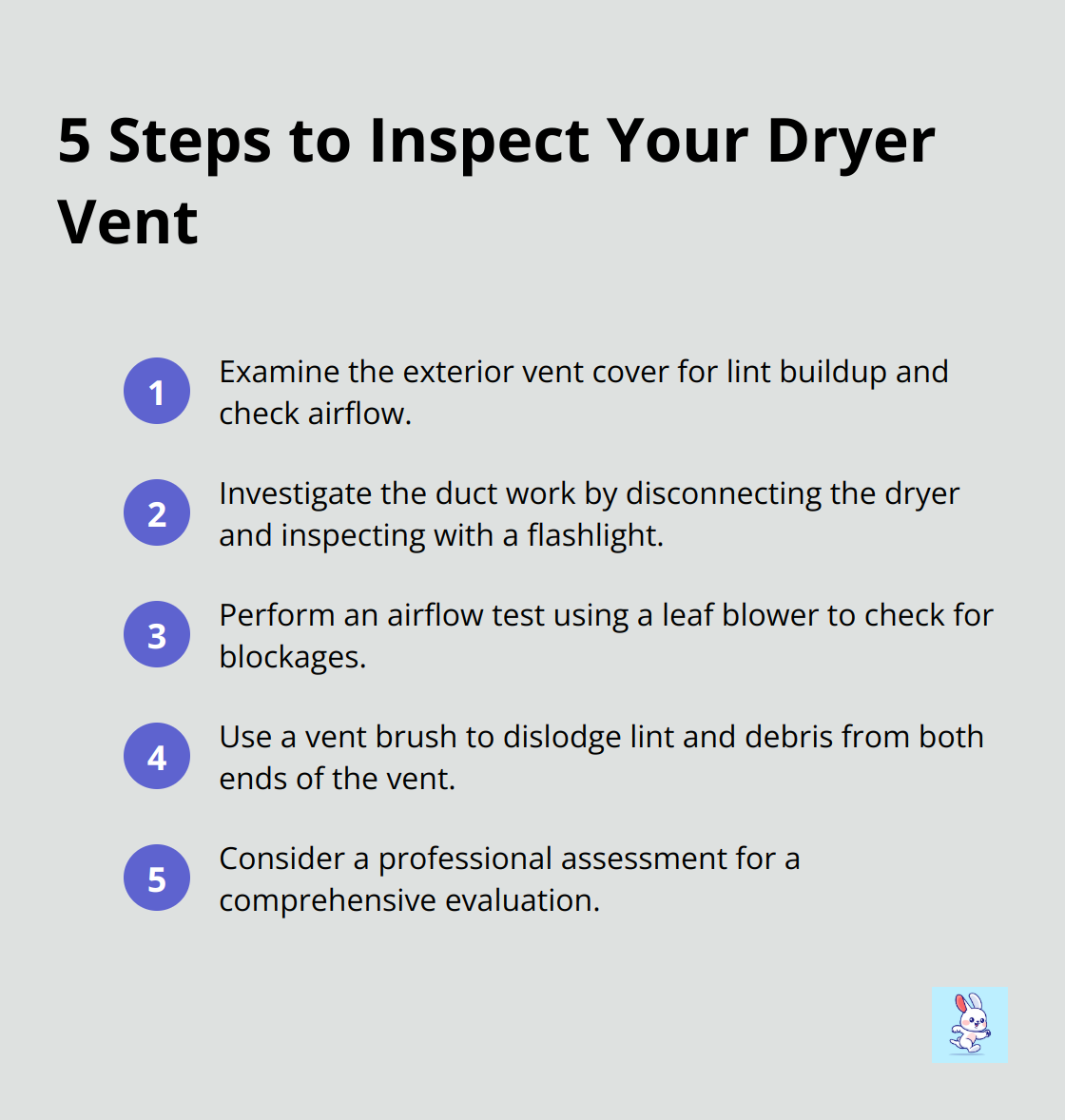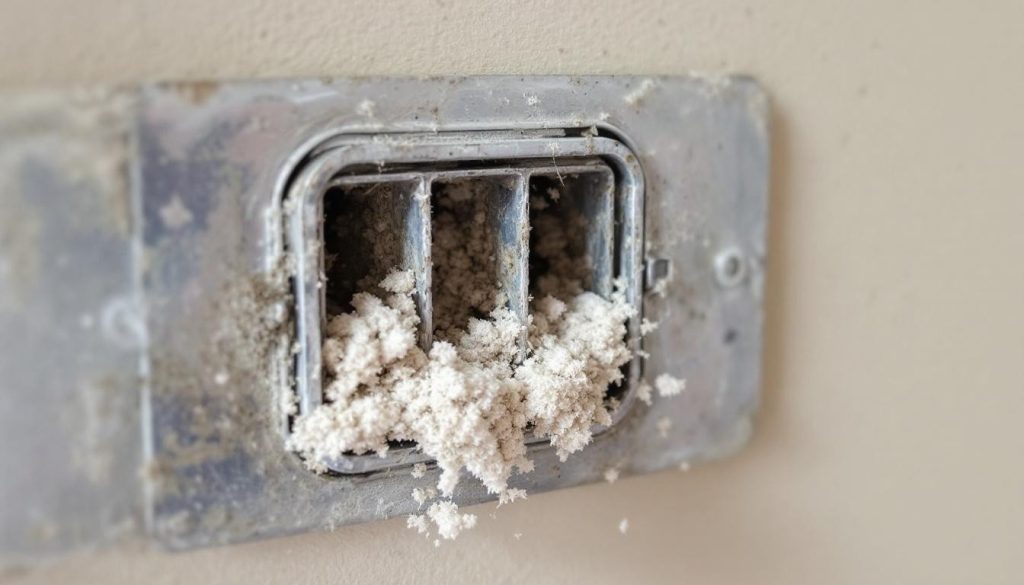Is your dryer taking forever to dry clothes? You might be dealing with a blocked dryer vent.
At Cleaning Rabbit, we’ve seen firsthand how vent blockage signs can often go unnoticed, leading to serious problems down the line.
In this post, we’ll show you how to spot the warning signals and what to do about them, keeping your dryer running safely and efficiently.
How to Spot a Blocked Dryer Vent
Prolonged Drying Times
Your clothes should not take an eternity to dry. A clogged vent can significantly restrict airflow, causing the dryer to operate under increased strain. Pay attention to your typical loads; if a cycle that once took 40 minutes now requires an hour or more, your vent needs inspection.

Unusual Odors During Operation
A burning smell while your dryer runs is a serious warning sign. This odor often indicates that lint accumulates and potentially overheats. The National Fire Protection Association provides an overview of home structure fires involving dryers, including factors contributing to ignition. Don’t ignore these smells – they signal a potential problem.
Excessive Heat in Your Laundry Area
Touch the air in your laundry room during a drying cycle. Does it feel noticeably warmer than usual? A blocked vent prevents hot air from escaping properly, causing heat to build up in the surrounding area. This not only makes your laundry room uncomfortable but also forces your dryer to work harder (potentially shortening its lifespan).
Visible Lint Accumulation
Examine your dryer’s exterior vent flap. Do you see lint collecting around it? This clearly indicates that lint does not expel effectively. The U.S. Consumer Product Safety Commission advises regular checks for debris around the outdoor vent opening. If you spot lint buildup here, your vent system likely needs attention.
Unusual Noises
Listen for any strange sounds coming from your dryer. A blocked vent can cause your dryer to make unusual noises (such as rattling or humming). These sounds often indicate that your dryer struggles to push air through the clogged vent.
Now that you know how to identify a blocked dryer vent, let’s explore the potential dangers this issue can pose to your home and family.
Why Blocked Dryer Vents Pose Serious Risks
A blocked dryer vent is not just an inconvenience; it’s a significant safety hazard that can endanger your home and family. Let’s explore the real dangers of neglecting this important maintenance task.
Fire Risks Are Significant
The U.S. Fire Administration reports that 2,900 home clothes dryer fires occur each year in residential buildings. These fires result in an annual average of property loss and can be devastating. The primary cause? Failure to clean. Lint is highly flammable, and when it accumulates in your dryer vent, it creates perfect conditions for a fire to start. The heat from your dryer can ignite this lint, potentially leading to a devastating house fire.

Energy Bills Increase Dramatically
When your dryer vent clogs, your machine must work harder to dry your clothes. This extra effort directly translates into higher energy consumption. The U.S. Department of Energy states that a clogged vent can increase energy usage by up to 30%. Over time, this inefficiency can add hundreds of dollars to your annual energy bills (a cost no homeowner wants to bear).
Appliances Fail Prematurely
Your dryer isn’t built to operate under the strain of a blocked vent. The extra heat and moisture trapped in the system can damage vital components, leading to frequent breakdowns and a shortened lifespan for your appliance. Replacing a dryer prematurely can cost you anywhere from $400 to $1,500 (depending on the model).
Carbon Monoxide: The Silent Threat
For homes with gas dryers, a blocked vent poses an additional, life-threatening risk: carbon monoxide buildup. This odorless, colorless gas can accumulate in your home if it can’t escape through the vent, potentially leading to severe health issues or even death. The CDC estimates that approximately 400 people die from unintentional CO exposure in the United States every year.
These risks underscore the importance of regular dryer vent maintenance. But how can you check if your vent needs cleaning? Let’s explore some effective methods to inspect your dryer vent in the next section.
How to Inspect Your Dryer Vent

Examine the Exterior Vent Cover
Start outside your home. Locate the dryer vent exit and remove any visible lint or debris around the opening. If you see a buildup, it indicates that your vent needs attention. The U.S. Consumer Product Safety Commission highlights this step as essential for fire hazard prevention.
Run your dryer on the air-dry setting. Stand outside and feel for airflow coming from the vent. Strong, steady airflow indicates a clear vent. Weak or no airflow suggests a blockage that requires immediate attention.
Investigate the Duct Work
For a more thorough check, disconnect your dryer from the power source and pull it away from the wall. Detach the duct from both the dryer and the wall. Use a flashlight to look inside the duct. Search for any visible lint accumulation or obstructions.
If you spot significant buildup, clean your vent immediately. The National Fire Protection Association advises taking care of your clothes dryer for the safety of your home.
Perform an Airflow Test
Try this simple test to check your vent’s efficiency: Attach a leaf blower to your dryer vent (from the inside of your home). Go outside and observe the vent cover. If it opens easily and expels air forcefully, your vent is likely clear. If the cover barely moves or no air comes out, you probably have a blockage.
Use a Vent Brush
Purchase a dryer vent brush (available at most hardware stores). These long, flexible brushes can reach deep into your vent to dislodge lint and debris. Insert the brush into the vent from both ends, twisting as you push it through. This method can reveal hidden blockages and help you gauge the extent of the buildup.
Consider Professional Assessment
While DIY inspections provide valuable insights, professional assessments offer a more comprehensive evaluation. Experts use specialized tools (like cameras and rotary brushes) to thoroughly inspect and clean your vent system.
Professional services often use state-of-the-art HEPA-filtered equipment for thorough inspections and cleanings. Technicians can identify issues that might escape notice in a DIY check, ensuring your dryer vent is truly clean and safe.
Final Thoughts
Vent blockage signs should not be ignored. Longer drying times, unusual odors, and excessive heat warn of potential safety hazards and inefficiency. Regular dryer vent maintenance protects your home from fire risks, reduces energy costs, and extends appliance life.
DIY inspections help, but professional cleaning services offer superior benefits. Cleaning Rabbit brings expertise to ensure thorough vent cleaning and home safety. Our specialized equipment and comprehensive approach address issues that might escape notice during routine checks.
A clean dryer vent safeguards your home and loved ones. You invest in your home’s longevity and family’s well-being when you maintain your dryer vent. Take proactive steps to keep your dryer vent clear and your home safe (don’t wait for problems to escalate).

